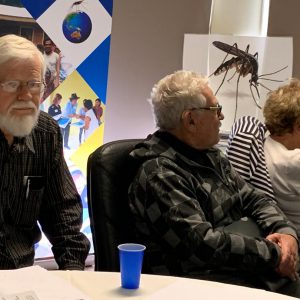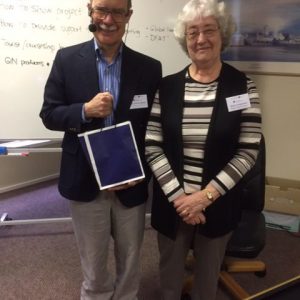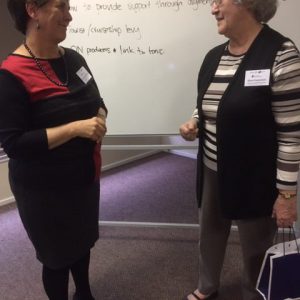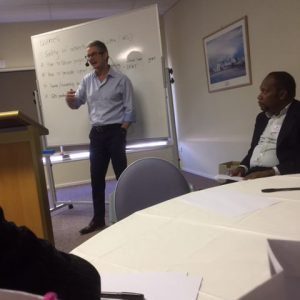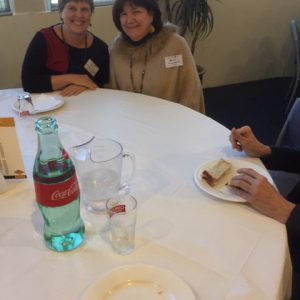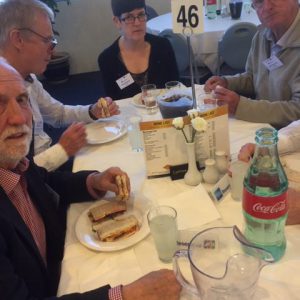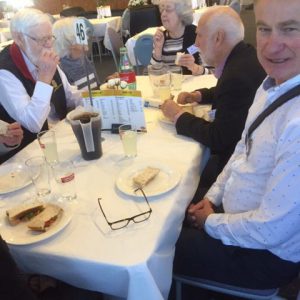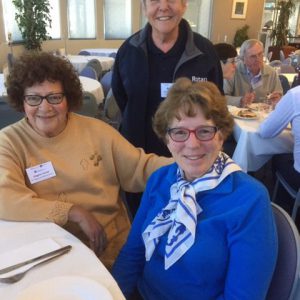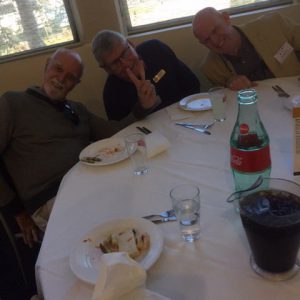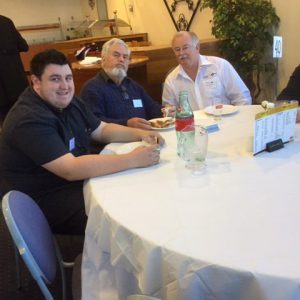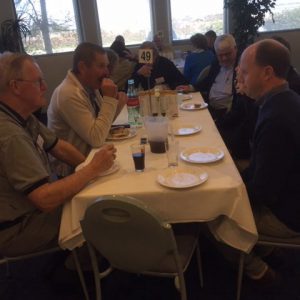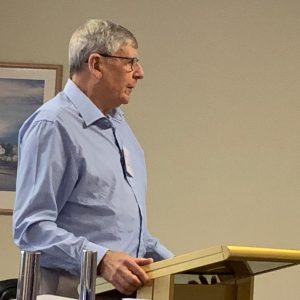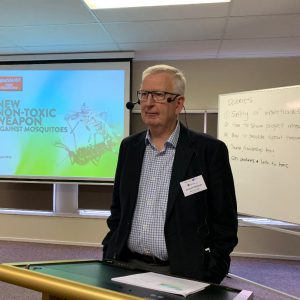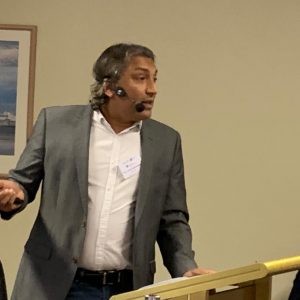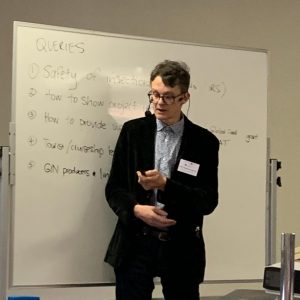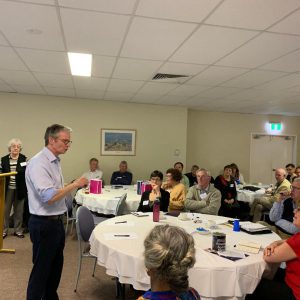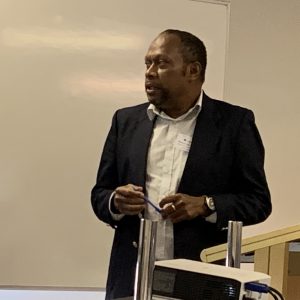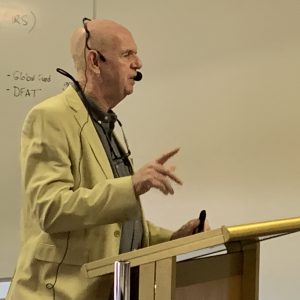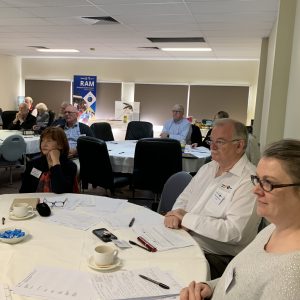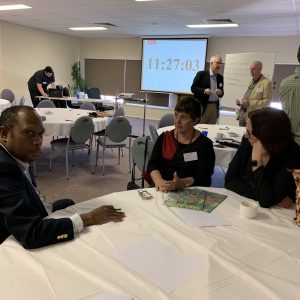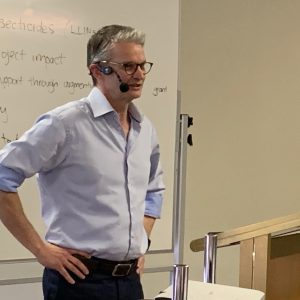2019 RAM Conference Summary of Proceedings
2019 Rotarians Against Malaria Conference
Ciloms Airport Lodge, Tullamarine, Victoria
Acknowledgements
The 2019 RAM Conference could not have come to fruition without the inputs of many RAM Executive Committee members and the generousity of our world-renowned Professionals (academics and researchers) who donated their time and expense to be at our Conference. We are also grateful to Speakers from partner countries: Tim Freeman (RAM Papua New Guinea); and Director Len Tarivonda and Dr. Tessa Knox (Vanuatu). We thank you all for your contribution to this Conference. Also, thank you to RAM Executive Committee members: Dave Pearson, Gloria Hargreaves, Virginia Turner, Bill Oakley, and Bruce Anderson. RAWCS Chair John McLaren, played an important role in this Conference. He stepped up for Dave Pearson at the last minute. Thank you. Finally, thank you to the Ciloms Airport Lodge Judy and staff.
Introduction
This year, the annual RAM Conference was held at the Ciloms Airport Lodge, Tullamarine, Victoria. A total of 53 delegates attended the Conference over the two half days. For the first time in its history, the annual RAM Conference included two Pre-Conference workshops on the Saturday morning. The workshops were well attended with 24 and 30 delegates in the first and second workshops, respectively.
The Conference opened at 13:00 on Saturday 24 August. It provided up-to-date information on malaria disease from world renowned academics: Professors Brenda Crabb, Stephen Rogerson, Maxine Whittaker, Dennis Shanks, Tom Burkot, and Harin Karnajeewa. Graham Strachan presented an interesting session on Aquatain AMF – an anti-mosquito tool. In addition, we were pleased to have at the Conference, Vanuatu’s World Health Organisation (WHO) Technical Adviser Dr. Tessa Knox and Dr. Len Trivonda, the Director of Public Health, Vanuatu Ministry of Health. The speakers powerpoint presentations are on the RAM website https://ram.rawcs.com.au
Saturday 24 August 2019
Two pre-Conference workshops were offered this year. An overview of each of the workshops are presented below.
Pre-Conference Workshops
Workshop One: Dr. Tessa Knox (WHO Technical Adviser, Vanuatu) and Director Len Tarivonda (Director of Public Health, Vanuatu)
Dr. Knox highlighted WHO’s key documents and in particular, the Global Technical Strategy (GTS) 2016 – 2030 for malaria elimination. The GTS is a major guide to countries working towards malaria elimination. Dr. Knox emphasized that malaria resurgence can occur if control efforts are reduced with serious outbreaks in populations with little to no immunity. In line with WHO, vector control core interventions (nets and indoor residual spray [IRS]) remain important. Her take home message is that “Malaria elimination is achievable – Vanuatu is well on its way to elimination” Collaboration in the fight against malaria is important. She quoted If you want to go fast, go alone. If you want to go far, go together.
Director Len Tarivonda shared the findings and recommendatons of the Vanuatu Malaria Program Review (MPR) (July 2018). Importantly, there were no confirmed malaria deaths since 2012. In 2017, there were no local cases in Tafea and Torba with 96% of cases in Malampa and Sanma – two most problematic provinces in terms of malaria infections. The MPR concluded that Vanuatu is well on its way to achieving malaria elimination. Director Len presented several recommendations and plans for support from various donors. He invited RAM to support Vanuatu.
Workshop two: Tim Freeman, RAM PNG Project Manager. RAM PNG is the principal recipient of the Global Fund. Topic: Chasing Malaria Program.
Tim examined the Papua New Guinea (PNG) Chasing Malaria Program and whether the Project can be replicated in other RAM partner countries. He highlighted the criteria for successful Community Malaria Control Program. An important aspect of the Chasing Malaria Project is local data monitoring for malaria cases. Surveys were conducted at schools and nets were given to children who tested positive for malaria. In remote locations, an innovative approach is to engage volunteers and teachers who were trained in testing and treatment of malaria cases. The community-based approach and the training of volunteers and teachers to bring malaria services to remote communities are key strengths of the Program. With the information presented to us, it appears that the Chasing Malaria Program could be replicated in other RAM partner countries.
Conference Opening
Rotary District Governor Brian Peters, District 9790, extended a warm welcome to all delegates and formally opened the Conference.
Following a brief introduction and welcome by new National Manager for RAM, Dr. Jenny Kerrison, our RAWCS Chair PDG John McLaren presented the RAM Annual Report that was prepared by Dave Pearson who was unable to attend the Conference.
Professor Brendan Crabb (Burnett Institute) Topic: WHO 2018 World Malaria Report and WHO’s “High burden to high impact” strategy.
He highlighted the successes in malaria reduction since 2010 due to better testing and treatments. Rapid Diagnostic Tests (RDTs) and bed nets remain very important in malaria elimination. However, progress in malaria disease reduction has stalled. There is resurgence of malaria in PNG and in many African countries. There are no clear answers as to why progress has stalled. Some of the challenges that will slow further progress are: financial challenges; shifts in climate, populations and vector location; and complacency, conflict, other competing priorities. WHO targets are unlikely to be met. Professor Crabb provided an overview of the”High burden to high impact” – a country-led response to remind countries of the need to forge ahead with available tools and strategies.
Professor Stephen Rogerson (Department of Medicine, Doherty Institute, University of Melbourne). Topic: Malaria in Pregnant Women.
Over 100 million women are at risk for malaria during pregnancy. Women in their first pregnancies have far worse outcomes because they have not developed immunity to the plasmodium parasite protein VAR2CSA in the placenta. Major problems with malaria during pregnancy are maternal anaemia deaths and infant deaths from low
birth weight (LBW). The WHO’s three-pronged approach (early diagnosis and treatment; IPTp and use of LLINs) to malaria in pregnancy guides prevention and treatment of malaria during pregnancy. Research to identify the best drug for intermittent preventive treatment of pregnant women (IPTp) was presented. Professor Stephen concluded his session with a list of key points for delegates to consider. One of the points was What “package” of antenatal interventions would offer most benefit? In other words, what approaches can be integrated with routine antenatal care services to bring the best outcomes for pregnant women.
Professor Maxine Whittaker (James Cook University, Townsville). Topic: Community participation and malaria elimination.
Community engagement is commonly referenced in projects but the concept is poorly understood. A key message in Professor Whittaker’s presentation is that people living in affected communities must be at the centre of all efforts in our malaria services. Professor Whittaker spoke about the global civil society movement initiated by the group Civil Society for Malaria Elimination (CS4ME). Underpinned by social justice and human rights, effective community-based malaria surveillance and response systems can be successfully implemented by partnering with civil society. The notion of the ‘determinants of community participation’ was a useful, and highlights the factors that encourage community participation. The presentation was useful for RAM to improve how we engage with communities in malaria elimination efforts.
Professor Dennis Shanks, Australian Army Malaria Institute. Topic: Potential of the new antimalarial drug Tafenoquine
The presentation underscores relapsing malaria (vivax) as a threat to malaria elimination. It will be much harder to eliminate plasmodium vivax than falciparum. The two drugs available for treating relapsing vivax infections are Primaquine and Tafenoquine. Tafenoquine (TQ) is Australian TGA approved. It kills all stages of parasite including liver parasites (hypnozoites) critical for malaria elimination. G6PD test is required before treatment because severe haemolysis can occur in patients with G6PD deficiency. To eliminate relapsing vivax, it is recommended that mass drug administration be undertaken (e.g. as occurred in China). However, mass drug administration will not be adopted until the G6PD problem is better managed.
Professor Tom Burkot, Australian Institute of Tropical Health and Medicine (AITHM), James Cook University, Cairns, Queensland. Topic: Malaria vector surveillance in countries of elimination and control status.
Vector control (LLINs and IRS) contribute to 80% reduction of malaria cases. Entomological surveillance allows proactive response to insecticides resistance. Surveillance, including vector surveillance, is a core intervention in the Global Technical Strategy (WHO, 2016 – 2030). Professor Burkot shared with us the information on the Vector Surveillance Survey that was conducted on 35 countries. He emphasized that monitoring vector control intervention coverage and quality is essential to identifying gaps and opportunities. One of the key takeaway points is that vector surveillance is important to preserve LLIN and IRS effectiveness. In ending the presentation, Professor Burkot emphasized that “if data is collected, it should be used” – without which the surveillance would be meaningless.
Professor Harin Karunajeewa, Walter and Eliza Hall Institute (WEHI). Topic: Update on studies of primaquine for vivax malaria in the Solomon Islands.
Professor Harin’s presentation added to our understanding of the challenge of relapsing plasmodium vivax infections and malaria elimination. The problem is important as four out of five episodes of P.vivax are due to hypnozoite relapse (hypnozoite being previously dormant in the liver) with release of parasites in the blood stream. It should be emphasized that malaria elimination is only possible if the hypnozoite are killed. Professor Harin’s research “ACT-radical” looked at the use of two artemisinin combination therapies (ACTs) in combination with primaquine for radical cure of Plasmodium vivax malaria in the Solomon Islands. The research revealed that dihydroartemisinin-piperaquine (DHP) + primaquine for treatment of Plasmodium vivax resulted in the highest percentage of patients who were vivax free after six months. His research brings us one step closer to malaria elimination.
Sunday 25 August 2019: 09:00 – 12:30hr
The Conference on Sunday morning focused on malaria elimination progress in our partner countries. Also, an Annual Meeting was held with Rotarians followed by a session presented to RAM supervisors by National RAM Secretary Gloria Hargreaves. An overview of each session on Sunday morning is presented below.
Tim Freeman, RAM PNG Program Manager in the PNG Global Fund project. Topic: PNG Malaria
Tim presented an overview of the Global Fund RAM PNG work. RAM PNG works closely with the National Malaria Control Program to deliver key malaria programmatic tasks. Global Fund is a major donor for the RAM PNG project and contribute 74.9% of their funding. Under very difficult conditions, RAM PNG has delivered 10,873,695 LLINs between 2010 and 2018. Following great successes between 2009 and 2014, PNG faced increases in malaria in 2017 and 2018. An interesting phenomenon that Tim highlighted was that in some provinces they had not seen decreased number of malaria cases following LLINs distribution. Studies have commenced to look at identifying causes of the large increases in cases. An important finding was that bed nets are losing their insecticidal activity before the three-year duration is up. Tim also shared with delegates regarding the Chasing Malaria Program that is underpinned by community participation in malaria elimination strategies.
Dr. Jenny Kerrison, National RAM Manager. Topic: Updates on the Rotary Global Grant Project in Timor Leste
A Rotary Global Grant project of USD251,334 for Timor Leste was made possible through multi-district donations of District Designated Funds (DDFs) from 15 of 21 Districts and 15 Rotary clubs in Australia. The 18-month project commenced in December 2018 and is jointly managed by the Rotary Club of North Hobart (D9830) and RAM. Key Grant activities were: 40,000 long lasting insecticidal nets (LLINs) for pregnant women, and 80 Hudson Sprayers for indoor residual spraying – these donations are distributed for use throughout Timor Leste. The Grant also included important training programs for community volunteers, midwives and Rotarians. Project implementation is progressing well and project completion is due in June 2020.
Andrea Grosvenor, D9710 Assistant Governor and RAM Project Manager. Topic: Brief Update on Solomon Islands
In March 2019, Andrea Grosvenor, Tim Freeman, and Dr Ivor Harris conducted a scoping visit to Solomon Islands in preparation for the DFAT project application for
Solomon Islands. In the visit, Central Islands was identified as a priority location for DFAT-RAM support. Solomon Islands’ malaria burden is among the highest in the Western Pacific Region of the World Health Organisation (WHO). Since 2016, Annual Parasite Incidence (API) has increased significantly from 88.8 per 1,000 to 93.2 per 1,000 in 2018. (Solomon Islands Annual Malaria Program Report (2018). The RAM DFAT project, if funded, will improve capacity of provincial malaria staff. Funding sought from DFAT was $738,000 with $300,000 from RAM.
Dr. Tessa Knox, WHO Technical Advisor Vanuatu. Topic: Progress Against Malaria in Vanuatu and beyond: lessons from history
Dr. Knox message was that “We must stay positive”. Malaria elimination is possible. She believed that we need to “pick the low hanging fruits and learn by doing”. With lessons from Tafea Province where malaria is eliminated using a mix of strategies, she suggested that a “whatever it takes” approach is necessary. Echoing Professor Whittaker’s emphasis on true community participation, Dr. Knox believed that citizen control, delegated power and partnership are critical elements for a successful partnership with communities. Malaria elimination is possible. However, WHO is less confident about the global achievement of malaria eradication.
Dr Len Tarivonda, Director of Public Health, Vanuatu. Topic: Malaria elimination in Vanuatu
By 2020, Vanuatu aims to achieve Annual Parasite Incidence of < 1 per 1,000 population and maintain zero deaths from malaria. Statistics on malaria infections revealed that as infections by Plasmodium falciparum (Pf) decreased there was the attendant increase in Plasmodium Vivax (Pv). Of the 6 provinces in Vanuatu, two provinces (Malampa and Sanma) have the highest API (5.1 and 3.8, respectively). Relapsing cases of Pv-malaria is a major obstacle to achieving malaria elimination. Primaquine is used but its safety and effectiveness cannot be guaranteed. A major challenge to malaria elimination is decreased funding from donors such as Global Fund and DFAT Australia. Vanuatu has set ambitious new goals to achieve zero indigenous transmission of malaria by the end of 2023, and to attain WHO malaria elimination certification by the end of 2026.
Graham Strachan, Inventor of Aquatain AMF. Topic: Aquatain AMF: Non-toxic weapon against mosquitoes
Aquatain AMF is a silicone-based liquid that self-spreads across water surface to prevent mosquitoes from breeding in the water. Trials were conducted across the world. The Aquatain is effective for four weeks on the surface and is environmentally friendly. Mosquitoes do not develop resistance to this substance. Approved by WHO, Aquatain is for sale in 60 countries. The product is also available as drops and small blocks. Aquatain AMF is promoted as an ideal complement to LLINs and IRS.
RAM Annual Meeting
The meeting focused on RAM’s financial situation with a review of disbursements of funds and donations from the districts for period 2018-2019. To date, from 2003 – 2019 (16 years), RAM has raised a total of $2,223,836.08. The 2019-2020 funding allocations for our partner countries were shared with delegates. As agreed by RAM Executive Committee, 24% of funds will be in reserve for funding the DFAT-RAM partnership for Solomon Islands in year 2020, if our application is successful. Thus, less funds will be available in 2019 – 2020 for our partner countries, scholarship, and
RAM administration. Jenny emphasized that this amount of funds is not be sufficient to provide meaningful support to our partner countries.
At the Annual Meeting, RAM acknowledged the contributions of D9810 Shelley Gurney who adopted RAM as a DG wife’s project; and Steve and Doreen Carroll (District 9670 RAM Supervisor, Eastern Region) who personally donated to RAM. In Southern Region, DGE Mark Humphries and wife Linda are exploring the possibility of adopting RAM as Linda’s project. We look forward to supporting DGE Mark and wife Linda in their fund-raising efforts for RAM.
A brief mention was made of the new RAWCS Constitution; the three national vacant positions, and the Rotarians Eliminating Malaria a Rotary Action Group (REMaRAG). Delegates were encouraged to register with REMaRAG.
Dai Mason, Malaria Vaccine Project Ambassador, presented an overview of the progress and future directions of PlasProtecT®.
During General Business, Steve Carroll presented a cheque for $8,500 to RAM. An important message from delegates was that they would like to see greater transparency in how RAM uses its funds.
At the closing of the Annual Meeting, it was announced that the next RAM Conference 2020 will be held in Newcastle, New South Wales.
Gloria Hargreaves, National RAM Secretary. Topic: Role of RAM District Supervisors
Before the Conference closed, Gloria provided an overview of the District RAM Supervisors role in promoting malaria awareness and support for RAM’s work. RAM promotional resources were available to delegates at the Conference.
Conclusions
The Pre-Conference workshops were well received. They were useful in guiding RAM in future project developments with Vanuatu and Papua New Guinea.
At this Conference, a similar message to that presented last year was that progress in reducing malaria infections has stalled. It was clear that malaria cases are on the increase in PNG and Solomon Islands. It was also clear that researchers have not found new innovations in regards tools to use in the fight against malaria.
The Conference confirmed that relapsing malaria from Plasmodium Vivax is a threat to malaria elimination in PNG, Solomon Islands and Vanuatu. New drugs offer hope in the treatment of relapsing malaria infections but the use of these drugs are delayed until the availability of point of care G6PD testing.
In the meantime, as Professor Dennis Shanks said to RAM delegates in 2018, we need to “maintain sense of progress and success. …[and] a great deal can be done with what we have now.”
In conclusion, malaria elimination is possible and will happen if, as Prof Helen Evans reminded us, in 2018, of Prof Feasham’s advice Make your commitment and go for it.
Jenny Kerrison PhD, D.Ed, RN, RM
National RAM Manager
——————————————————————————————————————-
2019 RAM Conference – Guest Speaker Presentations
Pre-Conference Workshops
Dr Tessa Knox: Progress Against Malaria in Vanuatu and beyond: lessons from history
Len Tarivonda: Vanuatu Malaria Program Review
Tim Freeman: Can the PNG Chasing Malaria Project be replicated in other RAM Partner Countries
Saturday Sessions
AG Andrea Grosvenor: Solomon Islands Needs Assessment
Dr. Jenny Kerrison: Annual Review
Dr. Jenny Kerrison: RAM Overview
Prof. Brendan Crabb: WHO Malaria Reports & High Burden to High Impact Strategy
Prof. Dennis Shanks: Potential of New Anti-Malaria Drug Tafenoquine
Prof. Harin Karunajeewa: WEHI Update
Prof. Maxine Whittaker: Community Participation, Malaria Elimination & CS4ME
Prof. Stephen Rogerson: Overview & Research Findings on Malaria Prevention in Pregnant Women
Sunday Sessions
Dr. Jenny Kerrison: Update on Rotary Global Grant for Timor Leste
Graham Strachan: Aquatain AMF – Weapon Against Malaria
James Roberts-Thomson: RAM to Ride and Meal)
Len Tarivonda: Vanuatu Ministry of Health – Malaria Elimination Situation, Challenges & Needs
Tim Freeman: PNG Malaria Statistics & Chasing Malaria Project Update
2018 Rotarians Against Malaria Conference, Gold Coast, Queensland
Conference Day One: Saturday 25th August 2018
Introduction
The 2018 National RAM Conference was held at the Institute of Glycomics, Griffith University, Gold Coast, Queensland – in Rotary District 9640. Seventy (70) delegates attended the Conference over the two half-days. The Conference offered a wide range of malaria related topics with over 15 speakers from research institutes; RAM; and RAM’s partner countries in Papua New Guinea (PNG); the Solomon Islands; Timor Leste, and our new partner West Timor in the Nusa Tenggara Timur (NTT) province, Indonesia. Most of the speakers’ presentations are available via media resources on the link below.
https://ram.rawcs.com.au/gallery/media-resources/
Acknowledgements
RAM wishes to thank the many Rotarians and volunteers for their hard work in the planning and day-to-day running of the successful Conference. Many people helped to look after our international delegates. Thank you. Undoubtedly, the Conference Committee was the key Conference driving force and many people played important roles such as in providing great wholesome foods. We thank the following people for their generosity – Liam Huges for audio-visual and IT support; Karin Kolenko for the donation of bottled water; Simon Jeanes and Regina Tucker for organising the food and tea/coffee. We enjoyed great mini-cup cakes! Finally, a huge thank you to the Institute of Glycomics, Griffith University, who provided use of their facilities; and gifts to the speakers. The Institute also provided RAM delegates several pre-conference sessions at the malaria laboratory on Saturday morning. The laboratory sessions were well attended by delegates.
Conference Opening
Rotary District Governor Terry Brown, District 9640, extended a warm welcome to all delegates and declared the Conference open. Following on from DG Brown, Dr. Chris Davis, the General Manager, Institute of Glycomics, welcomed delegates to the Institute. He acknowledged the connection with the Institute’s core program and Rotary District 9640 in the unique malaria vaccine research. He highlighted the Institute’s many research programs and human clinical trials that have translated into diseases treatment such the pneumococcus vaccine. Dr. Davis mentioned Professor Michael Good and Rotarian Dr. Danielle Stanisic’s world first clinical trial with human subjects. It was clear that the vaccine development at the Institute of Glycomics would not have been possible without the dedication and financial support from Rotary District 9640.
With the formality aside, Dr. Bruce Anderson (RAM Scientific Committee Coordinator) announced that at the recent Rotary International Convention in Canada, Rotarian Drake Zimmerman (Illinois) awarded our National RAM Manager Dave Pearson with the “Malaria Maniac of the Year” on behalf of the Rotarians Eliminating Malaria – a Rotary Action Group (REMaRAG). This award was in recognition of Dave’s work in advancing RAM and providing a model of practice that could be followed outside of Australia by Rotary International.
Dave Pearson, National RAM Manager, welcomed delegates to the 2018 annual Conference. He extended special thanks to Steven and Doreen Carroll whose donation has increased funding for the malaria vaccine project. He also thanked Dr Danielle Stanisic, PDG Dai Mason, and their Conference Committee; RAM Executives; and Rotarians who have so generously looked after our international guests.
Dave highlighted that the goal for RAM is Happy healthy kids eager to contribute to the economic world. RAM works in partnership with the governments of PNG, Solomon Islands, and Timor Leste. As with global trend, progress has reversed with increases in malaria incidence in PNG and Solomon Islands. Dave shared information on RAM’s work and malaria elimination progress in PNG, Solomon Islands, and Timor Leste. Recently, RAM conducted a trip to Timor Leste, and was successful in obtaining the Rotary Global Grant of USD251,334 for LLINs and sprayer machines for pregnant women in Timor Leste.
RAM’s vision is to contribute towards achieving malaria elimination. To achieve malaria elimination and eventual eradication, RAM would like to see Rotary International focus next on malaria disease after polio eradication. As reflected at the recent Malaria World Congress, Rotary is recognised as a potential global partner in malaria elimination.
Professor Tom Burkot, Getting to Zero: The Global Technical Strategy and Ensuing Events The presentation started with a historical overview of achievements in malaria disease management. Malaria cases were high between the years 1987 and 2007. However, this period saw the development of many malaria vector controls such as insecticide treated nets (ITNs) (now, LLINs), indoor residual spraying (IRS), intermittent preventive treatment of malaria (IPT) for pregnant women and children; rapid diagnostic tests (RDTs); and ACTs. With the advent of malaria controls, a gradual decline in malaria disease occurred between 2000 and 2015. Vector controls had contributed to reducing malaria transmission by 80%. Prof Burkot emphasises that vector controls with ITNs/ LLINs and IRS are successful even where vectors bite outdoors and early. He said Indoor strategies kill “outdoor” mosquitos.
Prof Burkot’s key message was on the World Health Organisation’s (WHO) (2015) Global Technical Strategy 2016 – 2030 for malaria elimination. The strategy provides global, coordinated approach to malaria elimination. The document describes what a country should do and how. Fundamentally, Prof Burkot emphasised that it is Important to maintain access to interventions that do work. He warned that scaling back is not an option, in particular, in areas where there are receptivity and vulnerability. In closing, Prof Burkot advised that to get to zero cases, investing in people is priority.
Prof G Dennis Shanks. Australian Army Malaria Institute. Why it will be hard to eliminate malaria? Eliminating polio could be the single best thing for malaria elimination, as it frees up resources for malaria elimination. As Prof Shanks stated, It’s going to be hard to eliminate malaria.
Elimination means killing the last parasite in a population/area. Leaving a few asymptomatically infected persons risks future epidemics. The hardest part will be getting rid of relapsing (Vivax) malaria. The last parasite is Plasmodium Vivax (Pv). He stressed that You must get the last parasite. Prof Shanks said that the challenge is to convince people to continue to spend resources on eliminating residual parasites in human reservoir when there are other competing demands. Decreased cases means less interest in malaria elimination.
Prof Shanks emphasised that huge use of antimalarial drugs and insecticide impregnated nets cannot be sustained indefinitely. We need to apply new strategies using current tools. At the same time, there is a need to prepare for the future by applying new strategies using new tools. The goal is to get rid of malaria and prevent resurgence. Globally, malaria elimination is set for achievement in the year 2030. Given the current situation, Prof Shanks was cautiously optimistic with his closing advice that we need to Maintain sense of progress and success. Compete for resources. And, new tools are needed for high transmission areas but a great deal can be done with what we have now.
Associate Professor Helen Evans, AO, The Nossal Institute for Global Health at the University of Melbourne. Co-Chair of the 1st Malaria World Congress, Melbourne. Prof Helen Evans provided an overview of the Malaria World Congress (MWC) that was held in Melbourne, in June 2018. She shared Prof Feasham’s call to “…make your commitment and go for it”. The Global Fund to fight AIDS, Tuberculosis and Malaria (the Global Fund) was an example of making commitment first and then acting on the commitment to make it happen.
Prof Evans outlined the key objectives of the MWC and the three key themes that framed the Congress. An important outcome of the MWC was the establishment of a civil society organisation (CSO) collective called “CS4ME”. The message is that we need to partner with civil society and community actors for malaria elimination.
She highlighted that focusing on malaria has the economic return of 6:1 dollar and is sustainable. The economic benefits provide a strong case for investment in malaria elimination. She highlighted that Inaction will lead to malaria resurgence and past efforts will be lost. As in the Congress Statement of Action, The Status Quo is not OK. Prof Evans praised Rotary. She said that Rotary’s strengths and ‘can do’ attitude have valuable influence. Rotary’s role was acknowledged throughout the MWC. Collaborative action is important and Rotary has a significant role to play in malaria elimination.
Tim Freeman, RAM PNG Program Manager. Chasing Malaria in PNG In PNG, the Global Fund contracts RAM to manage: net distribution, drug distribution, health facility visits, management of finances for Institute for Medical Research, Global Fund (IMR) and National Department of Health (NDOH); and ‘Chasing Malaria’ project. In collaboration with the PNG government, RAM has delivered approximately 1.2 million LLINs each year. RAM also distributes LLINs to vulnerable groups: pregnant women, schools, and prisons. RAM is working closely with the National Department of Health Supply Division to fill in stock shortages of ACTs and RDTs throughout PNG. Tim revealed the challenges in working in PNG.
RAM supports a program referred to as the Chasing Malaria programme in collaboration with WHO, NDoH Malaria Programme, Central Public Health Laboratory (CPHL) and Central Province Health Authority (PHA). RAM works with schools and communities trying to destroy breeding sites through filling in puddles of water, larviciding, covering water places, fish. As a result of World Malaria Awareness Day (MAD) 2018, RAM carried out malaria prevalence surveys in primary schools. Nets were given to RDT positive cases. The testing revealed high number of malaria cases. At Kuriva school, 33.3% of students tested positive but were asymptomatic. At another school in Berere, 64.1% of students tested positive. In the future, RAM will work with communities in the Chasing Malaria programme.
Albino Bobogare, Solomon Islands Director of the National Vector Borne Disease Control Program. Overview of Malaria incidence (API) and control in Solomon Islands. RAM commenced support for Solomon Islands in the early 2000. Solomon Islands has high Annual Parasite Incidence (API) (number of confirmed cases during one year multiply by 1,000 and divided by the population under surveillance). In 2014, API reached lowest 50 cases per 1,000 but increased in 2016 and 2017. The problems could be due to reduced effectiveness of vector intervention in population; reduced diagnostic; decreased reporting from 400 health facilities.
Mr. Bobogare highlighted that Central Islands and Malaita provinces have low 100-250: 1,000 cases. Nonetheless, Malaita province has 44% of all country cases. Thus, the Ministry of Health (MoH) has emphasised the need to focus on Malaita province for impact towards reduction of malaria towards pre-elimination in the country. He presented on the malaria program components emphasising that health promotion other cross-cutting health systems are vital for effective performance.
There are many challenges to malaria elimination. For example, the current health reform agenda is a challenge to malaria elimination at health facility level. Mr. Bobogare outlined requirements for quality data at the health facilities. He presented the Government’s plan for health systems reform with emphasis on decentralisation and integration. Within this context, malaria program is not a core program but integrated. In closing, Mr. Bobogare highlighted that in decentralisation, there needs to be a robust health system in place at all levels including, at the health facility level, to support malaria elimination.
Ben Ricki Kiokimo, Solomon Islands Director of Health Promotions. Settings approach in Solomon Island. With 80% of the population living in the villages, Mr. Kiokimo’s presentation flags the need for community participation in health promotions. He highlighted the Health Promoting Village model as a key approach that is / will be applied in all provinces. In this model, RAM is a partner and has provided basic tools for village cleaning.
In reference to the role of the government, a thought provoking question posed by Mr. Kiokimo was Are we tap turners or floor moppers? In the analogy to turn the tap, communities are seen as partners with the government in health promotion. Ben emphasised that intersectoral collaboration for prevention, protection and promotion of health aspect must be by people. He said that People are part of the problems and solutions.
The Healthy Village approach has contributed to reduced malaria cases in the majority of villages between 2011 and 2014. As part of the Healthy Village, RAM provides basic tools for village clean up. Isabel Province has had the highest need with 120 villages who have received tools from RAM. In Malaita Province, 63 villages have received tools and many more require support. Malaita is the most populated in the country with the most malaria cases. Mr. Kiokimo highlighted the challenges to malaria elimination. In closing, he emphasised that there is a need to work with communities.
Assoc. Prof. Harin Karunajeewa, The Walter and Eliza Hall Institute of Medical Research Clinical trials to improve malaria treatment and controls in the South Pacific. Prof Harin’s key message was that it takes a long time of nine (9) to 15 years from the time of drug discovery to getting the new drug approved for use. The drug discovery phase or drug pipe-line where large numbers of drugs are discovered takes 3 to 6 years. Only 1 in 1000 drugs discovered gets to clinical trial stage lasting up to six to seven years. And, only 1 in 1,000 gets to the Food and Drug Administration (FDA) review stage that may take up to two years for approval. Prof Harin highlighted the link between malaria drug research, changes in treatment policy, and reduction of malaria incidence. A major challenge to malaria drug research is the financial costs. The average cost for clinical trials is US$36,500 per person. The prohibitive costs means that clinical trials are reducing.
Dr Rob James (MD). Project Manager. The Walter and Eliza Hall Institute of Medical Research – An Approach to P.vixax Malaria Elimination in the Solomon Islands. The ACT-Radical Study. Dr. James shared information on their research project in Guadalcanal Province, Solomon Islands, where they applied three different anti-malaria medication regimes in the treatment of Pv malaria. One of the medications used was Primaquine – a drug that causes damage to red blood cells and anaemia in patients with G6PD deficiency. Patients on Primaquine were monitored for haemolysis (breakdown of red blood cells). Dr. James related some of the challenges of conducting research in the Solomon Islands. A challenge is the low community awareness of malaria management; and low treatment compliance.
Edgar Pollard, PhD Candidate. James Cook University. Insecticide impregnated outdoor screens. Mr. Pollard is a RAM PhD scholarship recipient who is in his final year of his candidature. His research highlighted the need for outdoor malaria vector control tools because mosquitoes are biting from 6pm onwards. In his research, he studied the use of mosquito barrier screens over 80 nights in the Solomon Islands and Cairns, Australia, to determine best practice such as type of colour; screen thickness and height. Mr. Pollard’s findings suggest that black and green screens are superior. Thickness of the screen is important and thick screens do not work as well. Other factors to consider are the need to allow airflow with recommended screen thickness of 70% shading with a minimum height of at least 1.2meter. The barrier screens were placed in three areas, close to houses, around village and at larval sites. Further research is needed to measure impact of the screens as vector control; the impact of sun and weather exposure on the screens; and community acceptability of the screens. In conclusion, the screen is a potential new malaria vector control tool.
Malaria Video Competition – Viewing of the malaria videos took place at the Conference dinner on Saturday 25th August. Thank you to Virginia Turner for her work in driving and coordinating the video competition. Conference delegates enjoyed the opportunity to view and judge three videos submitted by primary school children in Victoria and Queensland. The children were required to film a video on the protection of babies and young children from malaria. Results were as follows: Brighton Primary School, Victoria, won first prize of $700: Balwyn North Primary School, Victoria, won second prize of $400; and the third prize of $300 went to Faith Lutheran Junior School, Thornlands, Queensland. All videos can be viewed on the RAM website. As advised by Virginia, if the competition is to continue, we need to start preparing schools to enter this national RAM competition in 2019.
Conference Day Two: Sunday 26th August 2018
RAM Annual General Meeting. Dave Pearson, National RAM Manager, presented RAM’s financial review and budget allocation for PNG, Solomon Islands, Timor Leste and NTT (Indonesia) in 2018-2019. An additional source of funding for RAM in this year is the USA251,334 Rotary Global Grant for RAM in Timor Leste. There is also the potential for RAM to apply for a DFAT funding for the Solomon Islands. RAM procedures document review will be undertaken in the coming year. Dave announced that Dr. Jenny Kerrison (PhD) is the new National RAM Deputy Manager. Nominations were called for the vacant positions of RAM National Secretary and Media and PR Officer. These positions remain available.
PDG Graham Jones, Project Manager Rotary District 9640 Malaria Vaccine Support Project provided an update on the PlasProtecT Malaria vaccine project that is undertaken at the Institute of Glycomics, Griffith University. The project was launched on 27 March 2017. This is a multi-district Rotary project. The initial target was $500,000. Rotary D9640 is close to achieving $500,000. With new clinical trials challenges, the project has a new fund raising target of $1 million.
Professor Michael Good Principal Research Leader and National Health and Medical Research Council Senior Principal Research Fellow, Institute of Glycomics, Griffith University. Malaria: the path to discovering a whole parasite vaccine. Malaria is in the 10 top causes of death in low-income countries. Four of 10 deaths occur in children. Natural immunity takes about 5 years to develop in areas of endemic exposure. Gains over last few years were due to bed nets (have biggest impacts); drugs; and further gains will need something else. Prof Good emphasised that Vaccines save lives. Vaccines are the most cost effective way to improve public health. Developed elsewhere, the first malaria vaccine RTS,S had 18-36% efficacy during first 3-4 years after vaccination but 4-7% efficacy over 7 year period. At the Institute, research is focused on whole parasite blood stage vaccine that promises to improve vaccine efficacy.
Dr Danielle Stanisic, Senior Research Fellow, Institute of Glycomics, Griffith University. Development of a Whole Parasite Blood-Stage Malaria Vaccine. Dr. Stanisic presented on the evaluation and testing of vaccines which takes a long time as they progress through the pre-clinical laboratory and animal studies; human clinical studies (phases 1,2, 3); and approval and license. In the PlasProtecT Malaria vaccine research, a pilot clinical study will identify the correct vaccine dose, safety and tolerance. More clinical trials will be conducted.
Dr. Arnand Odedra. Clinical Research Fellow, QIMR Berghofer Medical Research Institute. Infectious Diseases and microbiology Specialist Registrar, UK. Using the induced blood stage malaria model to develop new interventions against malaria. Dr. Odedra described how malaria was induced in volunteers, to allow testing of new medicines on infected volunteers. One of the malaria medicines was Tefanoquine that was tested on 12 subjects volunteers who were successfully treated and did not develop malaria. He also briefly spoke about research to study the transmission model of malaria from healthy volunteers to mosquitoes and transmit on to others. The human challenge models show utility in malaria research and has the potential to accelerate drug development and improve understanding of biology of malaria.
Dr. Merita Monteiro, Head of Communicable Diseases, Ministry of Health, Timor Leste. Progress, challenges and way forward of National Malaria Program toward Malaria Elimination in Timor Leste. The background success to malaria elimination was presented. Timor Leste has made huge progress to reduce Annual Parasite Index (API) (malaria cases/1,000 population/year) of 37 in 2009 to API of zero (0) in first quarter in 2018. The country’s vision is a ‘malaria-free’ Timor-Leste by end 2020. The malaria elimination program’s three objectives were outlined. In 2017, Timor Leste achieved 103% with long-lasting insecticidal nets (LLINs) (i.e 3% above target). Eighty-two per cent of pregnant women have received LLINs. It was also noted that 101% of a target of 31,201 households received indoor residual spraying.
A major challenge to Timor Leste’s malaria elimination plan is imported malaria cases from NTT Indonesia with more than 95% of the cases reported at the border areas between the two countries. The lack of funding for LLINs is another challenge to Timor Leste. The estimated budget required in 2019 is USD248,978 and in 2020 is USD324,581.
Dr. Manel Yapabandara, Technical Advisor for the National Malaria Program, Department of CDC, Ministry of Health, Timor Leste – Observations on the successful Timor Leste National Malaria Program. Dr. Manel has worked in Timor Leste for over a decade as a malaria Technical Advisor with the World Health Organisation (WHO). In 2017, she left WHO to join the Ministry of Health (MoH). She shared her story of how Timor Leste reduced malaria cases from 226,230 in 2006 to only 5 imported cases between January to July 2018. Timor Leste is in malaria elimination phase. Dr. Manel highlighted four key factors that contributed to the success in Timor Leste, these are:
- Detail and complete Situation and GAP analysis
- Good National Malaria Strategy and detail costing
- Strong Long Term Technical Support
- Major financial support mainly from the Global Fund starting from 2002 and Rotarian Against Malaria, Australia starting from 2006
Dr. Theresia Sarlyn Ralo, Head , Disease Prevention and Control, NTT Provincial Health Office – Malaria in Indonesia’s Nusa Tenggara Timor (NTT) Province. West Timor is part of NTT province and is in the western half of Timor island. Dr. Ralo highlighted that malaria cases have reduced in Indonesia between 2012 and 2017. In 2017, 72% of Indonesia did not have malaria and only two per cent of Indonesia is considered as high endemic areas. She provided a comprehensive picture of the state of malaria in NTT province.
Malaria is endemic in NTT province and has the second highest number of malaria cases in Indonesia. Fifteen per cent of the malaria cases in Indonesia were from NTT province. The population of NTT province is 5,609,275. Forty-two (42) per cent of the population in the province (nine of 22 districts) lives in low endemic areas and 24% of the population (7 of 22 districts) in high endemic areas. In 2017, there was Annual Parasite Incidence of 5.39 per 1,000 in NTT and three deaths from malaria disease. Malaria elimination efforts in NTT province are supported by the Governor’s regulation no.11, 2017 on malaria elimination in NTT. Several non-government organizations (NGOs) are working with communities in this field. The NTT districts bordering with Timor Leste are: Belu, Malaka and Timor Tengah Utara (TTU). Details on the villages that are endemic for malaria were available in the presentation. Dr. Theresia recommended that cross-border work with Timor Leste needs to focus on: (1) early diagnosis and treatment; and (2) improve resources at the service.
Due to a late finish of the presentations, RAM program planning was not done and the closing speech was not presented.
Closing Notes
Dr Jenny Kerrison (PhD), National Deputy Chair for RAM. Closing Speech (not delivered). Congratulations to all who have made this RAM Conference a success. District 9640 has done a wonderful job of hosting us.
As DG Terry Brown D9640 said, the Conference has certainly been very informative with presentations on recent researches, innovations and updates on malaria elimination progress in our partner countries. RAM’s vision is to support our partner countries to achieve malaria elimination. To support these countries, RAM must advocate to Rotarians that malaria kills many more people than some other diseases. Our partner countries’ presentations were humbling and are the reasons that drive RAM and our presence at this Conference.
A clear message conveyed over the last two days was that innovations and researches are important to develop better tools for use in malaria elimination. In the meantime, as advised by Prof Dennis Shanks, we need to maintain sense of progress and success. …[and] a great deal can be done with what we have now. If we are daunted by the enormity of our tasks ahead, Assoc Prof Helen Evans reminded us of Prof Feasham’s advice (speaker at the first Malaria World Congress in Melbourne) when he said Make your commitment and go for it.
——————————————————————————————————————-
2017 Rotarians Against Malaria Conference, Sydney
The 2017 annual RAM Conference was held at Rowers on Cook’s River adjacent to Sydney International airport over the weekend of 19th and 20th August 2017. This was the first RAM Conference to be held in Sydney and was attended by 71 delegates representing 16 Rotary Districts. This was the first RAM Conference to be held in Sydney following the policy of rotating the Conference venue through the major eastern seaboard cities to make it easier for more Rotarians to attend and be inspired by RAM’s programs and mission. The Conference agenda included updates on progress in the countries where RAM has active programs, reports on the progress of malaria research, the RAM AGM and discussion sessions where future directions for RAM were planned.
Conference Opening:
Delegates were welcomed to the Conference by host District 9675 Governor Steven Britten and the National Chairman of RAWCS PDG Michael Perkins. The Conference commenced with a review of RAM’s progress in 2016/2017 by National RAM Manager, PP Dave Pearson, who welcomed delegates and summarised RAM’s achievements over the previous twelve months including ongoing programs in PNG, Solomon Islands and Timor Leste . Dave also introduced the invited speakers including representatives from the Ministry of Health in Timor Leste, Dr Merita Monteiro, and from the Solomon Islands Health Promotions Dept. Mr Ben Rickie, distinguished researchers, RAM Sponsored PhD candidate Edgar Pollard and the team of RAM Volunteers recently returned from Timor leste.
Dave recognised the recent sad loss of past RAM National Chairman and long term RAM Funding Coordinator PDG Richmond Manyweathers whilst also reporting on the presentation of RAWCS Humanitarian Service Awards to RAM pioneers Wayne Morris and Ron Seddon. He noted that the RAM Annual report had now been printed as part of the published RAWCS 2017 Annual Report .
Summaries of progress in countries where RAM has been active:
Papua New Guinea: report from Tim Freeman RAM PNG.
Tim reported that RAM PNG is currently undertaking the third round of universal bed net distributions to households. He described the process as a three year rolling cycle with teams moving systematically from province to province. Persistent malaria still exists in West Sepik and Milne Bay Provinces and despite an overall reduction in malaria incidence of 70% there are indications that incidence is starting to increase.
Tim said that the cause of increased incidence was not clear and speculated that people might be staying up later and spending less time protected by bed nets or that perhaps it was related to persistent stock-outs of anti-malarial drugs in local clinics supplied by the NDOH. On a positive note Tim reported that the Bougainville “Healthy Island” program, similar to ‘Healthy Villages”, appears to be helping in malaria control and that perhaps this could be a future area for RAM assistance.
Tim also reported that Global Fund grants for PNG continue to decline and although RAM PNG will be the sole Principal Recipient for the 2018 grant the US$4.5 M will only fund distribution costs however the Against Malaria Foundation has agreed to fund the net procurement along with local corporate funding.
Tim described progress in the RAM funded “Chasing Malaria” program which maps positive diagnosed malaria cases in NCD and Central province, identifies malaria case clusters and follows up with Community based interventions. This includes more village disease education, identifying and dealing with mosquito breeding areas, ensuring all local people are using LLINs and encouraging alternate ongoing use of superseded LLINs e.g. as window screens.
Tim also reported that the Private Sector Retail initiative, where RAM was seeking to sell LLINs and Mosbar at affordable rates, is back on track following agreement with the Government over GST treatment.
Solomon Islands: RAM report by PDG Wayne Morris presented by Dave Pearson.
Wayne reported that to date a total of 160 villages had been supplied with tools under the RAM ‘Healthy Villages’ program at a cost of AUD$200,000. The RAM program in the Solomons has benefited from regular transfers of funds from RAM in Australia, direct contributions, e.g. a grant from RC Benalla of AUD$8,500; as well as local corporate funding. These funds have enabled RAM to provide tools for a further 29 villages.
The provision of bed nets and spray control is continuing to be funded under the Global Fund, the funding of the program has been changed with the SI Government having to provide the funding first before being reimbursed. Malaria elimination programs are continuing in Temotu and Isabel Provinces with funding from DFAT (Australia) and a similar program is planned for Western Province.
Timor Leste: report by PDG Phil Dempster.
Phil told delegates that RAM’s support for the Timor Leste NMCP was continuing and evolving. The latest bed net distribution is taking place in the Oecusse enclave with 40,000 nets funded by the Global Fund and logistical costs met by RAM. He also noted that this year RAM has commenced funding the Rotary Club of Dili Lafaek “Healthy Villages” project in Dili and Liquica districts. To date twelve villages have participated in this trial project which encompasses Community health and hygiene awareness training, establishing Community Committees, planning health interventions and building permanent rubbish disposal facilities, aimed at reducing mosquito breeding as well as improving village hygiene.
These developments were covered in more detail by the report from the RAM Volunteer team recently returned from assisting RCDL. (see below)
Presentations from Target Countries Department of Health Officials:
Mr Ben Rickie Kiokimo; Director Health Promotions Dept. Solomon Islands MOH&MS.
Ben described the Healthy Village Settings program, that he supervises, which is supported by RAM. He told delegates that to date 200 villages and 30 schools had benefited by developing and enacting self-help programs to improve the general health and wellbeing of these communities. He noted that the Solomons MoH&MS with help from RAM and the Global Fund had been so effective in controlling malaria that it was no longer rated in the top 10 dangerous diseases and that now non-communicable diseases related to metabolic and behavioural risk were the main concern.
Ben reported that the 658,000 population was 78% rural based and had variable access to Health Services, mostly clinics staffed by Nurse-Aids as the patient Doctor ratio was 1:5,098. Ben told us that there was competition amongst Villages to secure “Healthy Villages” support which his Department attempted to distribute on a fair basis. He noted that the risk of a renewed malaria epidemic was understood and that the ‘Healthy Village Settings’ program was a good point of entry to discuss health and disease prevention with villages. Ben said he was open to helping to facilitate future RAM Volunteer teams to assist with the program.
Dr Merita Monteiro; Head of Communicable Disease Division Timor Leste MoH.
In her presentation Dr Merita tracked how the Timor Leste National Malaria Control Program (NMCP) had taken the country from Control to Elimination in 10 years and was now changing its name to the National Malaria Elimination Program. In 2006 malaria incidence was 1 in 4 people and the NMCP had only 2 staff. Recent statistics show an incidence of less than 1 in 10,000 and the focus is now on achieving WHO malaria free certification. She reported that 98% of recent cases occurred on or close to the borders with Indonesia.
Dr Merita reviewed the robust evidence based approach to the malaria campaign conducted by the NMCP showing how the elements of this approach as well as regular follow-up of vector control and close Government support had enabled the success. However she also noted that the Global Fund was also significantly reducing their funding now that the disease incidence was so low and so there was a worrying short fall in funding to achieve elimination. She expressed the gratitude of the NMCP for RAM’s support and expressed the hope that RAM could assist with meeting the shortfall of funds to maintain bed net protection of at risk population and vulnerable groups as well as assisting in replacing worn-out residual indoor spraying (IRS) equipment.
Presentations by Researchers on the fight against Malaria.
Associate Professor Harin Karunajeewa; WEHI:
With a local goal of malaria elimination in the next 13 years Harin noted that the most successful interventions to date have been LLINs(best control), drug treatment followed by IRS. He added to concerns expressed that when malaria prevalence is driven down then local health authorities relax and focus on other pressing health issues. Indeed he presented an up dated malaria epidemic history graph for the Solomons showing a worrying recent up-tick in cases. Previous significant falls in malaria incidence have mostly been Pf and as a result the ratio of Pf to Pv frequency is rising rapidly with Pv now representing 2/3 of new cases and 4 out of 5 of these are relapses from previously introduced hypnozoites.
Harin noted that current drug treatments were only 50% effective at resolving Pv infections and described the field study he is conducting at Tetere, which is currently one of the most malarious places in the Solomons due to the concentration of oil palm workers. Harin highlighted the risks of Drug Drug Interactions (DDIs) in the current best practice treatment employing Primaquine and ACTs and went on to outline his research aimed at investigating the degree of DDIs in current treatments and identifying the optimal drug combination and dosage for radical cure of Pv infections.
Professor Denis Shanks; Australian Army Malaria Institute:
In his talk titled “How we are going to eliminate malaria.” Denis reviewed recent successful control and elimination cases including the Amazon basin where very little Pf remained and rates of Pv are falling. He praised the work under way in China where most cases these days were infected Chinese workers returning from Africa and attributed the effective elimination of local transmission to massive administration of Primaquine.
He noted that progress was threatened by drug and insecticide resistance, mostly in Asia, but that it seemed under control for now whilst work on a replacement for permethrin was progressing. He also reference exciting progress in gene shearing (CRISPR), mosquito specific baits and drug developments including Tafenoquine to replace Primoquine and the use of Ivermectin in breaking the mosquito borne part of the parasite life cycle.
Other developments, that would be needed, included better diagnostics as evidence suggested that RDTs were missing some low level Pf infections as well as some Pv. Denis stated that if an anti-transmission vaccine was going to be available in time to assist global eradication programs then it would need to be in advanced trials now, given the long regulatory lead times.
Dr Danielle Stanisic; Institute for Glycomics, Griffith University:
Dr Stanisic presented an update of progress towards producing a chemically attenuated whole parasite vaccine based on Plasmodium falciparum called PlasProtecT®. She noted that the vaccine must be simple, cheap, effective and well tolerated and that so far all indications were positive. She noted that the production of ‘T’ cells triggered by application of the vaccine was particularly encouraging and that early indications suggested that the induced immunity would be effective on multiple species of plasmodium.
Proposed human trials will involve three sets of ten volunteers who will be give different dose rates and closely monitored. Each volunteer would have to possess sixty required attributes to be selected.
Dr Stanisic reviewed the track record of the only currently registered malaria vaccine, RTS S₁ which is currently undergoing a huge trial involving 300,000 children in Ghana, Kenya and Melawi. Recent long term trials indicate that RTS S₁ only retains 7% efficacy after 7 years and only had a peak efficacy of 38% against Pf only, following the required four treatments. Despite these poor results the huge development sunk cost and long lead time had severely cautioned potential supporters who now required far more advanced data before committing to fund other vaccine candidates.
Associate Professor Bayden Wood; Monash University:
Bayden described his research into the application of Attenuated Total Reflection Spectroscopy as a novel method for detecting very low level malaria parasite infections in people from blood prick samples. The aim was to develop a new highly accurate field test for asymptomatic malaria carriers that could contribute to elimination programs. He described field trials conducted in Thailand, Laos and PNG where each patient’s blood was tested by three different techniques but voiced concern that the subjects that had been selected did not include many asymptomatic carriers and so he was looking for further trial sites.
He noted that results to date had been very encouraging and that preliminary patent protection was being sought and that it was hoped that further trials would help develop an instrument and routine that enable local health workers to use the technique in remote locations.
RAM sponsored PhD student Edgar Pollard; Australian Institute of Tropical Health & Medicine:
Edgar reported that he had completed his field work and was now relocated to Cairns to conduct further laboratory studies and data analysis. He displayed a very well-produced video tracking the movement of a mosquito around a typical Solomons village setting. Edgar noted that most mosquito biting occurred after dark and that changing human behaviour was contributing to increased risk.
Edgar reported that there was currently a higher proportion of younger people who stayed outside to socialise after dark and so were vulnerable to bites even though later in the evening they slept under LLINs (86% of people surveyed used LLINs). He noted that new vector control such as repellents, mosquito baits and screening might be require to maintain low infection rates.
Report by RAM Volunteer Team: Timor Leste, June 2017.
The team reported that they had enjoyed a busy and productive time in Dili and Arturo Island. They had met with officials from the Global Fund, WHO and NMCP and participated in a bed net distribution with the NMCP. They had met with the Rotary Club of Dili Lafaek and assisted with ‘Healthy Village’ activities including installation of steel rubbish bins and village clean-up. On Arturo Island they had inspected a RAWCS water purification project and sanitation requirements.
The team reported that they were deeply impressed by the NMCP. The team was also very impressed by the enthusiasm and hospitality of the RC Dili Lafaek members and their ability to involve other young people in volunteering (for the good of their nation) on their project. They proposed that RAM should seek closer collaboration between RC Dili Lafaek and the NMCP as well as improving guidelines to increase the malaria focus of the project.
RAM AGM.
A brief AGM was held at the commencement of conference sessions on 20th August.
National Chairman Dave Pearson reported that RAM had had a strong year for both fund raising and awareness raising with a 60% increase in donations received whilst at the same time the fund raising project in support of the vaccine development at the Institute for Glycomics was well underway. The RAM Executive Committee had met on the morning of 19th August and determined that the 2017/2018 budget would be $200,000 to be distributed in the following proportions: 50% to PNG, 5% to Solomons, 20% Timor Leste, 12.5% to the PhD scholarship and that 7.5% would be held unallocated (for new initiatives) and 5% for administration and Conference costs.
Dave reported that the aspirational target for fund raising of $20,000 per Australian Rotary District, agreed at the 2015 Conference, had been exceeded in D9810 during the past year confirming that it was a realistic goal for most Districts.
The revised RAM Procedures Document had been previously circulated to all RAM District Chairs and given tacit approval by the RAWCS Ltd Board. The document was then unanimously endorsed by delegates at this AGM.
Nominations for Executive Committee positions of Deputy National Manager, Funding Coordinator and Scientific Committee Coordinator had been called for prior to the Conference and again on the floor; Mr Bill Oakley was elected unopposed as Funding Coordinator, Dr Bruce Anderson was elected unopposed as Scientific Committee Coordinator. No nominations were received for Deputy Manager and Dave commented that this position must be filled urgently if there is to be a reasonable induction and hand-over period prior to his term of 3 years as National Manager expiring on July 1st 2018.
RAM District Chairs Training session.
In this session Dave covered the history of RAM, it’s achievements to date, organisational structure and communications as well as reviewing RAM’s current vision and increasing focus on malaria elimination. The use of personal stories as well as the free access to all existing RAM PowerPoint slides was emphasised in the important role of presenting RAM and our goals to Rotarians and the public. The basic aspects of the role of RAM District Chairs were discussed and the pro-forma annual report, with it’s embedded benchmarks, was described. Dave noted that basic job descriptions for RAM people were included in the Procedures Document and that a more complete discussion of the role of district Chairs would be circulated after the conference. (all the documents mentioned and Conference presentations will be posted on the RAM website.)
RAM’s PR and Media Coordinator Holstein Wong conducted a thorough demonstration of RAM’s new web site and the RAM Facebook page was displayed. Holstein highlighted the Contacts listing, Reports and Newsletters section along with photo galleries, presentations, videos, documents, leaflets and other resources all available on the site for RAM Chairs and Committee members to assist in preparing presentations and getting the message out. Delegates were asked to look for opportunities to post RAM activity short reports on the RAM Facebook page (contact Holstein to post) and prepare reports for their District enews and RDU magazine. Dave added that he was more than happy to have RAM presentations plagiarised by RAM Chairs in developing their own presentations.
Reports on RAM related activities in Australia.
Rotaract Project: Michael Shields: Chairman -Rotaract Australia Against Malaria.
Michael reminded delegates that RAM had been adopted as a National project of Rotaract at the 2013 National Conference and had raised $30,000 for RAM’s programs over three years including $8,567 over the past 12 months. He noted that with the annual turnover of office bearers new Rotaractors inspired by RAM’s work would be required to maintain the interest and enthusiasm in Rotaract.
Michael encouraged RAM District Chairs to engage local Rotaractors in their District programs as well as seeking to speak at Rotaract meetings. He noted that across Australia there are 60 Rotaract Clubs and about 1,000 Rotaractors .
Schools Video Competition.
The two short videos prepared by Victorian Primary School students as a pilot for a future National competition were screened after the Conference dinner and a winner determined by show of hands. Inaugural winners were the students at Brighton Primary School. The videos will be available to be viewed on RAM’s web site and Facebook page.
Malaria Awareness Day (MAD) and World Malaria Day Activities.
2017 MAD activities from around the Nation were briefly reviewed as examples of successful awareness raising and fund raising opportunities.
Project to Support human trials of the Institute for Glycomics Vaccine candidate.
Speaking straight after Dr Danielle Stanisic’s presentation PDG Graham Jones presented a report on progress of D9640 Project (RABS 16-2016-17) aimed at raising $500,000 to support the next phase of human trials for PlasProtecT®. Graham reported that in little over six months the project had raised $212,000 and now had it’s first corporate sponsor in Zarraffa’s Coffee. He added that now that the $200,000 had been achieved Professor Good had sufficient assurance of funding to commence preparations for the trials.
Graham noted the successful launch of the Project by Governor General Sir Peter Cosgrove, who had commented that the combination of “Whitecoats and Rotarians working together” was a powerful model. Graham reported that a presence at the RI Convention had opened possibilities for more support from Rotary in the USA.
PP David Pearson.
National Chairman: Rotarians Against Malaria.
Rotarians Against Malaria Conference
20th to 21st August 2016, Melbourne
The 2016 annual RAM Conference was held at Ciloms Airport Lodge at Tullamarine Melbourne over the weekend of 20th and 21st August 2016. This was the first RAM Conference to be held in Melbourne and was attended by 58 delegates representing 12 Rotary Districts. The idea of holding the Conference in Melbourne was to encourage more local Rotarians to attend and experience RAM as well as providing an opportunity for the Melbourne based Walter & Eliza Hall Institute for Medical Research (WEHI) and the Burnet Institute to showcase their malaria research programs. The Conference agenda included updates on progress in the countries where RAM has active programs, reports on the progress of malaria research, the RAM AGM and discussion sessions where future directions for RAM were planned.
Conference Opening.
The Conference was opened by National RAM Chairman Dave Pearson who welcomed delegates and summarised RAM’s achievements over the previous twelve months including ongoing programs in PNG, Solomon Islands and Timor Leste . Dave also reviewed notable RAM activities in Australia including promotion of World Malaria Awareness day, DG’s Partner fund raising in D9820, the great work of Rotaract’s malaria project and the developing project arising from the Rotary Ride Around Australia Against Malaria (RRAAAM) fund raiser conducted by Steve and Doreen Carroll. These achievements are also detailed in the RAM Annual report to RAWCS which will be posted on the RAM web site and published by RAWCS.
Summaries of progress in countries where RAM has been active:-
Papua New Guinea: report from Tim Freeman RAM PNG.
Tim reported that RAM PNG is currently distributing Long Lasting Insecticidal Nets (LLINs) at a rate of about one million per year. In the last 5 years 7M LLINs have been distributed to households in all 89 districts in all 22 provinces and a further 1M LLINs have been distributed to vulnerable groups. By mid-2016 LLINS have been distributed by RAM twice in every province except Enga in addition to a previous distribution by Government.
Recent problems include a lack of malaria treatment drugs at local clinics due to poor stock control by the Health Dept. and ongoing tribal fighting in some areas making it impossible to deliver LLINs direct to villages. In this case the LLINs are distributed at schools.
Tim described progress in the RAM funded “Chasing Malaria” program which maps positive diagnosed malaria cases in NCD and Central province, identifies malaria case clusters and follows up with Community based interventions. This includes more village disease education, identifying and dealing with mosquito breeding areas, ensuring all local people are using LLINs and encouraging alternate ongoing use of superseded LLINs eg as window screens. Data collected in some clusters displays a uniformity of cases across all age groups indicating local reinfection and loss of adult immunity.
Tim also reported that the Private Sector Retail initiative where RAM was seeking to sell LLINs and Mosbar at affordable rates is currently on hold due to ongoing GST negotiations with Government. Once again Tim brought sample LLINs, Mosbar and Colouring in books (used to help malaria awareness in kids) to the Conference to distribute to RAM Chairs as demonstration items.
Solomon Islands: report by PDG Wayne Morris Presented by Dave Pearson.
At the 2015 conference it was agreed to allocate AUD$30,000 for the Healthy Village tools program. The funds together with other NGO funding was used to provide tools for 22 villages in the Russell Islands, Central Province. The DG partners project in D9820 raised AUD$22,291 for Healthy Villages and these funds together with further funds from RAM, making up to AUD$30,000 have recently been transferred. Funding has also been secured from the Solomon Forest Association of AUD$16,000 per year for the next three years. These funds together with the funds recently transferred will provide tools for a further 25 villages.
The provision of bed nets and spray control is continuing to be funded under the Global Fund, the funding of the program has been changed with the SI Government having to provide the funding first before being reimbursed. Malaria elimination programs are continuing in Temotu and Isabel Provinces with funding from DFAT (Australia) and a similar program is planned for Western Province starting in 2017.
Timor Leste: report by PDG Phil Dempster.
Phil reported on the progress of a request from the Timor Leste NMCP for RAM to assist by funding the distribution of LLINs previously supplied by the Global Fund. After careful consideration of the request RAM has offered to fund distribution costs on a dollar for dollar basis with contributions from the MoH up to a maximum of US$20,000. The timing of this program is still being worked out.
Phil then outlined a new project proposed by the newly chartered RC Dili Lafaek to implement a “Healthy Villages” project in Dili and Liquica districts. The proposal encompasses Community health and hygiene awareness training, establishing Community Committees, planning health interventions and building permanent rubbish disposal facilities, aimed at reducing mosquito breeding as well as improving hygiene. These two Timor projects represent an opportunity to send Rotary Volunteers to assist and observe.
Vanuatu project of RRAAAM: report by Steve Merritt.
Steve described the search for a suitable project to invest the $30,000 raised by the Rotary Ride Around Australia Against Malaria being undertaken by Steve and Dorene Carroll. After considering PNG and Solomons where RAM already has active programs Steve and Dorene have based themselves in Vanuatu and had numerous meetings and observation visits to understand what is needed by the local malaria program and where they can best assist. They have determined that rebuilding LLIN storage facilities is the current best fit and are negotiating an MOU with the Vanuatu Government.
Reports on RAM related activities in Australia.
Rotaract Project: Michael Shields: Chairman -Rotaract Australia Against Malaria.
Michael related that eliminating malaria was a goal that was considered achievable in the lifetimes of most Rotaractors and resonated as a tangible practical outcome that they could help achieve. Using slides and U-Tube Michael and Rotaractor Ben Hill showed the passion and creative thinking that can be applied to fund and awareness raising including enlisting corporate sponsors such as Westpac and holding an up-coming Rotaract Ball at Melbourne Zoo.
Michael described Rotaract’s ongoing fundraising approach noting that $8,100 had been raised over the past 12 months and that a personal donations portal had been set up and was available to anyone to use. Funds are tracked through a dedicated RAWCS project account before being transferred to RAM.
Forum Discussion Topics.
A series of discussion points aimed at assisting in developing future strategy for RAM were suggested prior to the conference and following a brief introduction of the topic on Saturday Forum discussions and consultations were led by selected delegates who reported the outcomes on Sunday morning.
1) Is the effort and expense in attempting to control mosquitoes by draining stagnant water around villages as in “Healthy Villages” worthwhile or should RAM concentrate on more direct vector control? Led by: Milton Lewis
Milton reported that the consensus was that the “Healthy Villages” program had an important role in ongoing disease education and action at village level and would contribute to reducing infective mosquito biting when people were outside and not protected by LLINs. It was also agreed that it represented an ongoing role for RAM in the Solomon Islands and that it was important for RAM to remain active there especially whilst elimination programs were being developed.
2) Should RAM fund raise and use some of our reserved funds to support Vaccine development at the Institute for Glycomics? Led by: Sam Doumany
Sam pointed out that Australian RI President Clem Renouf had convinced RI to accept the challenge of eliminating polio even though the disease had long been eliminated in Australia and the US. Sam reported support from the delegates for fund raising as a separate but parallel program to RAM and that most considered that the two projects would be mutually beneficial in awareness raising without the need for RAM to contribute funds.
3) Should RAM work towards a National coordinated awareness and fund raising project for Malaria Awareness Day 2017? If so what form should this take? Led by: PDG Ian Sayers
Ian reported strong support for a two part national project culminating in local clubs staging activities highlighting that mosquitos are the most dangerous animal on earth with a sausage sizzle on MAD day in conjunction with a national retailer selling outdoor products. The suggested part of the project would be to sponsor a national competition for school kids to prepare a short video about mosquitos and malaria.
4) How should RAM best lobby Rotary International to be a major contributor to a future global malaria immunisation program? Led by: PDG John McLaren
John reported that the few suggestions received encouraged a continuous multi-level lobbying approach and noted that a substantial business case would be needed before a formal submission was put before the RI board.
RAM AGM.
A brief AGM was held at the commencement of conference sessions on 21st August.
National Chairman Dave Pearson reported that the RAM Executive Committee had met on the evening of 19th August and determined that the distribution of donated funds for 2016 / 2017 would be 40% to PNG, 35% to Solomons and Timor Leste, 15% to the PhD scholarship and that 10% would be held for new initiatives with disbursements based on an AUD$150,000 budget.
Dave reported that although an aspirational target for fund raising of $20,000 per Australian Rotary District had been agreed at a previous Conference there was much work to do to achieve that. Total fund raising for 2015/16 had been $125,000 or less than $5,000 per District after the D9820 DG’s partners project and Rotaract contributions were subtracted. Further he reported that the Executive Committee had determined to review the Manual of Procedures to align it with RAWCS Committee requirements and that proforma annual reports with indicative benchmarks for District RAM activity would be circulated for completion by all District Chairs.
The Executive Committee position of Publicity and Media Coordinator was declared vacant and nominations called for. No nominations were received.
Presentations by Researchers on the fight against Malaria.
RAM sponsored PhD student Edgar Pollard; Australian Institute of Tropical Health & Medicine:
Edgar reported that the latest statistics from the Solomons included 18,404 confirmed cases and 23 deaths from malaria in the past year. LLINs are working well and continuing to reduce the case load but that the nets only protect people when they are covered by them and that it is estimated that 13% of mosquito biting occurs outdoors. Edgar described his research on the flight characteristics of mosquitos and intended methodologies. Intended research outcomes include:-
- Best design for barrier screens.
- Understanding environmental effects on mosquito flight.
- Define local mosquito biting habits.
- Determine which human behaviours expose people to mosquito bites.
Edgar thanked RAM for supporting his research and looks forward to reporting interim results at the next RAM Conference.
Associate Professor Harin Karunajeewa; WEHI:
Harin was happy to acknowledge that some of his early research had been sponsored by Rotary in Perth. He told us that WEHI’s malaria research programs were focussed on the Pacific nations featuring a bench to bedside approach identifying best practice protection from, and treatment of malaria. He noted that future disease interventions must be prepared for changes in the behaviour of both humans and mosquitos.
Despite significant reductions in malaria cases in the Pacific, and a pleasing fall in the death rate, much of the progress had been achieved in reducing the incidence of Pf whilst Pv rates had been mostly static since 2008.This is a challenge to future elimination programs as Pv often exists in asymptomatic infected humans in the form of hypnozoites in the liver which are problematic to detect and treat with current methods.
Harin highlighted the risks of Drug Drug Interactions (DDIs) in the current best practice treatment employing Primaquine and ACTs and went on to outline his new research project in the Solomons focussed on investigating the degree of DDIs in current treatments and identifying the optimal drug combination and dosage for radical cure of Pv infections.
Professor Denis Shanks; Australian Army Malaria Institute:
Prof Shanks presented a talk titled “Why malaria elimination is not a dream” He concluded that malaria elimination is “possible but difficult” and that although a goal of 2030 has been set for elimination there are already weaknesses in national resolve showing up. He demonstrated some significant successes including Chinese elimination programs moving ahead of schedule and several countries (e.g. Argentina) recently being declared malaria free. Prof Shanks emphasised that elimination is about “killing the last parasite” but that this goal was complicated by changing patterns of human and vector behaviour and parasite adaptations including drug resistance.
He classified the challenges into Scientific and Logistical. Scientific problems currently include Drug Resistance, Latent infections (e.g. Pv hypnozoites) and Insecticide Resistance. Under Logistical he included: Inefficient local health systems, Governance of donated funding, competing demands for Govt. resources and landscapes in endemic regions. He highlighted the paradox that ‘the more disease control works the less the apparent problem and hence the less funding is applied’ and noted that this needs to be overcome if elimination is to be successful. On the up-side it has been demonstrated that post elimination there is no epidemic outbreak following the inevitable natural or manmade disasters that beset the formerly endemic countries.
Prof Shanks highlighted the following needs for elimination:-
- New drugs to clear and cure
- New insecticide (low human toxicity)
- Vaccine
- People to trust Government interventions, believe and support.
He noted that island by island progressive elimination programs in the Pacific should provide confidence for the 4th point.
Dr Danielle Stanisic; Institute of Glycomics, Griffith University:
Dr Stanisic presented an update of progress towards producing a chemically attenuated whole parasite vaccine based on Plasmodium falciparum. She reported that human trials where the safety, tolerability and stability of the vaccine had been evaluated were largely successful and that rodent trials testing induced immunity had provided encouraging results.
The next development stage will examine the protective efficacy of the vaccine in humans by conducting a broad based human trial in a non-endemic country (Australia) . Interestingly she reported that initial results in mice and human blood trials suggest that the vaccine, although based on falciparum, will induce immunity to other plasmodium species as well.
Following Danielle’s technical presentation D9640 RAM Chairman Sam Doumany then presented a strong case for Rotary to support these next stage human trials and reported that RC Southport is in the process of registering a RABS project to be a vehicle for fundraising throughout our Rotary Region(40,000 Rotarians) to raise the estimated $500,000 trial budget. Fund raising would include Rotary crowd funding as well as seeking the direct support of major philanthropists. Following Sam’s presentation National RAM Chair Dave asked for a show of hands in support for this initiative which returned overwhelming support.
Dr Jack Richards; Burnet Institute:
Dr Richards described the Burnet Institute as both an NGO as well as a research facility with 400 staff and students with malaria projects in Vietnam, Myanmar and PNG. Their experience has shown that elimination programs will have to pay special attention to vulnerable groups including children and pregnant women, poor and remote border populations and mobile and migrant populations and workers. Jack noted that through work, men are more often exposed to infection.
Dr Richards discussed the importance of natural immunity and the concern that people in areas where infection rates had been significantly reduced were losing immunity and hence becoming more vulnerable to outbreaks. In these areas he stressed the importance of strong (or strengthened) health systems with community engagement, good person focussed response to disease and good surveillance including well planned and monitored vector control.
In this context, Jack reviewed the current global momentum towards eradication of malaria including the WHO’s Global Malaria Action Plan (GMAP2) supported by the Global Technical Strategy (GTS) with their emphasis on the 3 pillars of :-
- Universal access to malaria prevention, diagnosis and treatment
- Acceleration of local elimination programs
- Transforming surveillance into a core intervention
He emphasised the need for development of a high sensitivity test to detect difficult to diagnose cases and infections in asymptomatic patients if pillars 1&2 were to be achieved and noted a recent success at Burnet was development of a field assay for the G6PD enzyme deficiency which would help avoid complications in some patients during future mass administration of Primaquine to remove latent infections. Unfortunately the test only applies to males.
Another area of Burnet research is in identifying targets for new blood stage vaccines as more effective vaccine than RTS,S will be required for elimination programs. This work currently involves identifying susceptible parasite proteins, developing and accessing new human antibodies and determining which vaccine adjuvants assist in inducing the strongest and longest immunity.
Jack also highlighted the importance of sustainable funding for these programs in some of the poorest countries of the world and noted the significant reduction in Australian overseas aid since the 1970’s.
Rebecca Feldman; Victoria Govt. Health and Human Services:
Rebecca gave us a fascinating insight into the active surveillance and outbreak control activities conducted by her team in keeping Australia free of imported vector borne disease. She described the monitoring and detection programs in place around sea and air ports and emergency response procedures required to control and eliminate out-breaks.
She pointed out the irony of RAM supporting programs like “Healthy Villages” giving people in endemic areas the means of reducing mosquito breeding sites when conversely, modern urban planning in Australia appears to encourage water features that frequently become very effective mosquito breeding zones.
RAM District Chairs Training session.
Immediate past RAWCS Chairman PDG John McLaren commenced this session describing the extensive reorganisation and governance strengthening work that had been completed by the RAWCS Ltd Board over the past few years. RAWCS is a facilitating organisation making it simple for Rotary Clubs to develop and complete overseas aid projects. RAWCS currently receives and manages >$30 million in donations for Australian overseas aid projects. RAM and DIK are the only national projects of RAWCS.
Then followed a short presentation on ‘Branding’ , that had been produced by RDU, to explain the benefits to RAWCS and large projects like RAM of consistent brand identification. This provided context to discuss the new RAM leaflets and promotions in RDU.
RAM’s website was displayed and delegates were informed that the site would be upgraded during the year to be phone and tablet friendly and better integrated with the new RAWCS website. Project descriptions, the current home page video and the donations routine were all demonstrated. Delegates were asked to look for opportunities to post RAM activity short reports on the RAM Facebook page and prepare reports for their District enews and RDU.
The ‘RAM Chairs Information Kit’ developed for last year’s Conference was revisited, demonstrated and explained as were the RAM Annual Report and a briefing paper developed for lobbying high level RI decision makers. All of this material and the Conference presentations will be circulated to RAM Chairs and Committee members via USB storage sticks or Dropbox post Conference.
PP David Pearson.
National Chairman: Rotarians Against Malaria.
2015 Report: (Download complete pdf Version)

